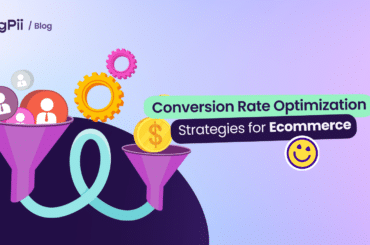You’re swiping through a dating app, and you come across someone who looks like they’ve just stepped out of a magazine cover. You swipe right, and boom! It’s a match. You meet for coffee, only to discover you have little else in common. Just like in dating, relying on a single factor can be misleading.
In A/B testing, that single factor is often statistical significance—a term many people use but don’t fully understand. It’s not just a buzzword; it’s a crucial metric that can guide important business decisions.
In this article, we will debunk some common misconceptions about statistical significance, especially in A/B testing.
What is Statistical Significance?
Before diving into the common misconceptions, it’s crucial to understand what statistical significance means.
In the context of A/B testing, statistical significance is a measure that indicates whether the difference in performance between two versions (A and B) is not due to random chance.
It provides a level of confidence in the results, often expressed through a p-value, which is a probability that helps you determine the reliability of your findings.
In simpler terms, achieving statistical significance in an A/B test means that you can be reasonably confident that the observed effect—such as an increase in click-through rates or user engagement—is a real outcome, not just a fluke.
Common Misconceptions About Statistical Significance
Statistical significance is like the first checkpoint in your A/B testing journey. It’s the initial green light that says, “Hey, this change might be worth something!” But—and it’s a big but—it’s not the end of the road.
Statistical significance is crucial but not conclusive, and that’s why we’re diving into some common misconceptions next to give you a fuller picture of this complex relationship.
-
Statistical Significance Guarantees Success
A statistically significant result is not a golden ticket to success. It’s more like a backstage pass—it gets you closer to the action, but it doesn’t guarantee a great show.
Statistical significance tells you that the change you made in your A/B test likely wasn’t due to random chance. But here’s what it doesn’t tell you: whether that change will improve user experience, boost conversion rates, or impact your business metrics.
For instance, you might find that a new website color scheme is statistically significant in increasing click-through rates. But what if those clicks don’t translate into sales? Or worse, what if the new color scheme annoys users and they leave negative reviews?
So, before you celebrate, remember that statistical significance is just one piece of the puzzle. It’s a good start, but it’s not the finish line.
-
Statistical Significance Implies Causation
The age-old confusion between correlation and causation. It’s like thinking eating ice cream causes sunburns just because both happen more frequently in the summer. Sure, the numbers line up, but let’s not jump to conclusions!
In A/B testing, it’s easy to believe that a statistically significant result automatically implies a cause-and-effect relationship. You see a low p-value and think, “Yes! Changing the call-to-action button to green caused more clicks!” But hold on, Sherlock, you might be solving the wrong mystery.
Statistical significance can tell you that there’s a relationship between two variables, but it doesn’t tell you the nature of that relationship. For all you know, the increase in clicks could be due to a completely different factor that coincided with your test.
-
Statistical Significance Equals Practical Significance
Picture this: You find a $1 bill on the street. Statistically significant? Sure, it’s a 100% increase in your street-found income. Practically significant? Well, unless you’re living in a world where $1 can buy you a mansion, probably not.
The belief that statistical significance automatically translates to practical significance is like thinking you’re ready for the Olympics because you won a three-legged race at a family picnic. The two just aren’t the same.
In A/B testing, you might find that changing your website’s font size led to a statistically significant increase in time spent on the page. Great, right? But did that extra time spent lead to more sales, higher user engagement, or any other metric that genuinely matters to your business?
The key takeaway here is to always consider the magnitude of the effect. A tiny, statistically significant change may not be worth the time and resources to implement.
-
A Non-Significant Result Proves There’s No Effect
Going on a date and not feeling an instant spark does not mean there’s zero chemistry. It could be that you’re both nervous and need more time to get to know each other.
Similarly, a non-significant result in an A/B test is not definitive proof that your new feature or strategy has no effect. It may mean that you haven’t collected enough data or the effect is too small to detect with your current sample size.
If you’re quick to dismiss a non-significant result, you might miss out on something that could become significant with a larger sample size or a more refined testing approach.
Also, context matters. Maybe your test was conducted during a holiday season when user behavior is atypical, or an external event temporarily skewed your results.
-
Statistical Significance Is a Binary Yes/No Decision
Wouldn’t it be nice if complex business questions could be answered with a simple yes or no? Like, “Will this new CTA increase our click-through rates?” Unfortunately, statistical significance doesn’t offer that kind of black-and-white clarity.
Many people treat statistical significance as a light switch—either on (yes, significant!) or off (no, not significant!). But in reality, it’s more like a dimmer switch with varying degrees of brightness.
Statistical significance is often determined by a p-value, usually set at the threshold of 0.05. But here’s the thing: A p-value of 0.049 doesn’t mean you’ve struck gold, and a p-value of 0.051 doesn’t mean you’re doomed. It’s more like a spectrum that represents the degree of confidence you can have in your results.
Moreover, statistical significance should be considered alongside practical significance. Just because a result is statistically significant doesn’t mean it’s practically meaningful. Sometimes, a result that’s not statistically significant could still have practical implications.
-
Statistical Significance Doesn’t Change with Sample Size
A common misconception is that the sample size becomes irrelevant once statistical significance is achieved. This is incorrect.
The sample size is essential in determining the reliability and validity of your A/B test results.
A larger sample size increases the likelihood of detecting smaller effects as statistically significant. However, it’s essential to note that even if an effect with a large sample size is statistically significant, it may be irrelevant to your business objectives.
Conversely, a small sample size may not provide enough data to detect an effect that could be significant, leading to a Type II error, where you fail to observe an effect that is present.
Sample size also affects the statistical power of your test, which is the ability to detect an effect if one exists. A larger sample size generally increases statistical power, making your results more reliable.
However, it’s crucial to balance the need for statistical power with the resources required for data collection and analysis.
-
Statistical Significance Eliminates Bias
Another misconception is the belief that achieving statistical significance in an A/B test automatically eliminates bias. While statistical significance can provide a level of confidence in your results, it does not account for biases that may have been present in the test design or data collection process.
For example, selection bias can occur if the sample groups in your A/B test are not truly random. This can skew the results and lead to incorrect conclusions. Similarly, measurement bias can affect the validity of your findings. If the tools or methods used to collect data are flawed, even a statistically significant result can be misleading.
Therefore, achieving statistical significance is not a guarantee against bias. Proper experimental design, including randomization and control for confounding variables, is essential for minimizing bias in A/B testing.
Avoiding Pitfalls When It Comes To Statistical Significance
Having addressed common misconceptions about statistical significance, it’s crucial to focus on how to avoid these pitfalls in your A/B testing efforts.
This section will provide practical guidelines to ensure that your statistical significance interpretation is accurate and relevant to your business objectives.
-
Define Clear Objectives
The first step in avoiding pitfalls related to statistical significance is to define clear objectives for your A/B test. Without a well-articulated goal, you risk misinterpreting the results or drawing conclusions that do not align with your business needs.
For example, instead of a vague goal like “increase user engagement,” aim for something more specific, such as “increase the click-through rate on the ‘Sign Up’ button by 15% within 30 days.”
By setting clear objectives, you establish a framework for interpreting your results. This lets you focus on metrics directly related to your goals and helps you differentiate between statistical and practical significance.
-
Choose the Right Significance Level
Selecting the appropriate significance level is another critical aspect of avoiding pitfalls in interpreting statistical significance. The significance level, often denoted by alpha (α), is the probability of rejecting the null hypothesis when it is true. Commonly set at 0.05, this threshold is not a one-size-fits-all criterion.
The choice of significance level should be tailored to the specific context and objectives of your A/B test. For example, if the cost of making a Type I error (false positive) is high—such as implementing a costly new feature that turns out to be ineffective—you may opt for a lower significance level like 0.01 to minimize this risk.
It’s essential to consider the trade-offs involved in setting your significance level. A lower alpha reduces the risk of false positives but increases the chance of false negatives, and vice versa.
Therefore, your chosen significance level should align with your business objectives and the potential risks and rewards associated with the test.
-
Prioritize Effect Size
Another essential factor to consider in your A/B testing is the effect size, which measures the magnitude of the difference between groups. While statistical significance can indicate whether an effect exists, it does not provide information on the size or practical importance of that effect.
Focusing solely on p-values(statistical significance) can be misleading. For instance, even trivial differences can become statistically significant with a large enough sample size. However, these may not translate into meaningful changes that align with your business objectives.
To avoid this pitfall, you must prioritize effect size alongside statistical significance. Incorporating effect size into your analysis also aids in determining the required sample size for achieving adequate statistical power, thereby increasing the reliability and validity of your A/B test.
-
Understand Statistical Power
Statistical power, or the ability of a test to detect an effect if one exists, is a crucial but often overlooked aspect of A/B testing.
A test with low statistical power increases the risk of committing a Type II error, where you fail to detect a real effect. This could lead to missed opportunities and incorrect conclusions about the efficacy of a change or feature.
Understanding statistical power involves considering your test’s sample size, effect size, and significance level. A larger sample size and a larger effect size generally increase the power, making it more likely that you will correctly reject a false null hypothesis.
It’s essential to conduct a power analysis during the planning stage of your A/B test to determine the required sample size for achieving adequate power.
-
Avoid P-Hacking
P-hacking, or the practice of manipulating your data or testing process to achieve statistical significance, is a serious issue that undermines the integrity of your A/B test results.
This can involve multiple comparisons, stopping the test once significance is achieved, or excluding specific data points to influence the outcome.
P-hacking compromises the validity of your findings and can result in poor decision-making that negatively impacts your business objectives.
If your results are not statistically significant, conducting a follow-up test or reevaluating your objectives is better than manipulating the data to achieve significance.
-
Use Confidence Intervals
While p-values and significance levels are commonly used in A/B testing, they don’t provide a complete picture of your results. This is where confidence intervals come into play.
A confidence interval gives an estimated range of values within which the true population parameter will likely fall, offering a fuller understanding of the uncertainty associated with your test results.
Confidence intervals also allow you to assess the practical significance of your findings. If the confidence interval for the difference between the two groups includes zero, this suggests that the effect may not be practically meaningful, even if it is statistically significant.
-
Replicate and Validate
One of the best ways to ensure the reliability of your A/B test results is through replication and validation. A single test, no matter how well-designed, provides only a snapshot of performance under specific conditions.
Replicating the test can confirm the consistency of the results, increasing your confidence in their validity. Validation involves conducting similar but independent tests to corroborate your findings.
For example, if an initial A/B test shows that a new website layout increases user engagement, a follow-up test could examine whether these results hold true across different user demographics or during different seasons.
Replicating and validating your A/B tests is a quality check, ensuring your results are reliable and generalizable.
-
Consider External Factors
The last but certainly not least point to consider is the influence of external factors on your A/B test results. While statistical significance can provide valuable insights, it’s crucial to remember that your test doesn’t exist in a vacuum.
External factors such as seasonality, market trends, and global events can impact user behavior and test outcomes.
To account for these factors, conducting a contextual analysis alongside your A/B test is advisable. This involves examining any external variables that could affect your results and, if possible, adjusting for them in your analysis.
It’s also beneficial to run your test over different time frames or conditions to assess the robustness of your findings.
Conclusion
Navigating the complexities of statistical significance in A/B testing can be challenging, but it’s crucial for making informed decisions that align with your business objectives. Understanding common misconceptions and how to avoid them sets the stage for more reliable, valid, and actionable insights.
Remember, statistical significance is not a standalone metric but part of a broader analytical framework that includes clear objectives, appropriate significance levels, effect sizes, statistical power, and consideration of external factors.
So, the next time you’re faced with interpreting A/B test results, take a holistic approach and consider all the elements that contribute to a robust analysis.



